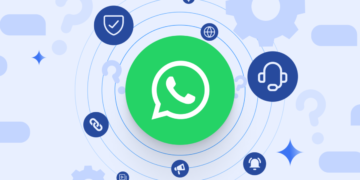The rise of gamified learning platforms like Gimkit, Kahoot, and Quizizz has revolutionized how students engage with education. These tools turn lessons into interactive games that make learning feel like fun rather than a chore. But while gamification boosts motivation and retention, it doesn’t always offer the deep, personalized instruction that some students need to truly grasp a concept.
That’s where one-on-one tutoring steps in. When combined thoughtfully, gamification and personalized tutoring can create a powerful hybrid approach to education: one that balances fun with focus, competition with comprehension, and speed with depth.
Why Gamification Works
Gamification taps into core psychological drivers like reward, achievement, and competition. For many students, answering questions to earn points or outscore classmates makes schoolwork feel less like a task and more like a game.
Research has shown that gamification can: – Increase student engagement – Improve knowledge recall – Encourage participation from shy or unmotivated learners
However, gamified tools are often designed for reviewing content, not introducing or deeply exploring it. Students may memorize answers without understanding the reasoning behind them. That’s where one-to-one tutoring comes in to fill the gaps.
The Strength of One-on-One Tutoring
While gamified learning gets students excited, tutoring offers the space to slow down and dive deeper. A good tutor doesn’t just give answers—they ask questions, listen carefully, and adapt lessons to fit the student’s pace, style, and struggles.
One-on-one tutoring is especially helpful when: – A student needs help mastering a foundational concept – There are learning gaps from past years – The classroom pace is too fast or too slow – Exam preparation requires targeted strategies
Tutors can also identify when a student has misunderstood something they might otherwise guess correctly in a quiz game. This allows for true learning, not just memorization.
Combining Both: A Best-of-Both-Worlds Strategy
The beauty of combining gamification with tutoring is that each method covers the other’s weaknesses. Here’s how educators and parents can use both effectively:
- Gamify Revision, Not Core Lessons: Let students use tools like Gimkit to review previously learned content. This keeps practice fresh and fun.
- Use Games to Diagnose Gaps: Tutors can observe which questions students consistently miss in games, then tailor sessions to those problem areas.
- Reward Progress in Tutoring: Incorporate gamified elements into tutoring sessions, such as points for completing exercises or leveling up through topics.
- Encourage Independent Play: Students can engage with quiz games outside of tutoring hours, keeping them involved in learning even on their own time.
This synergy keeps learning efficient, enjoyable, and effective.
A Real-World Example
Let’s say a student is preparing for a major math exam. Their tutor works through problem-solving techniques during lessons, making sure they understand concepts like algebraic manipulation. Afterward, the student reinforces their learning with Gimkit quizzes that test them on equations and formulas. The tutor then reviews which types of questions were missed most and focuses the next session accordingly.
This cycle builds confidence and retention while addressing weak points systematically.
Emotional and Cognitive Benefits
The blended approach also supports emotional well-being. Many students feel stressed or intimidated by school. Gamified tools can lighten the mood, while one-on-one tutoring offers reassurance and individualized encouragement.
This combination can help: – Reduce anxiety toward tough subjects – Foster a growth mindset – Keep learning positive and empowering
By catering to both emotional and academic needs, this strategy supports the whole learner.
For example, the American Psychological Association reports that student stress is at an all-time high, making supportive learning environments more critical than ever.
In addition, a report from EducationWeek explores how game mechanics in education—when properly structured—can increase student participation and drive better outcomes.
Where to Start
Parents looking to implement this hybrid model should look for two things: 1. A reliable gamified platform suited to their child’s grade level and syllabus 2. A qualified tutor who understands how to personalize support and integrate technology meaningfully
A trusted tutoring agency like SmileTutor can help bridge the gap by offering access to experienced tutors who are familiar with both traditional and tech-enhanced methods. can help bridge the gap by offering access to experienced educators who blend traditional methods with tech-savvy tools. by offering access to experienced tutors who are familiar with both traditional and tech-enhanced methods.
Final Thoughts
Education doesn’t need to be a choice between tradition and innovation. Gamification and tutoring each bring unique strengths to the table, and when used together, they make learning more complete.
As the classroom continues to evolve, this dynamic duo could be the key to helping students learn better, stay motivated, and enjoy the journey.
Whether your child thrives with flashcards or feedback, points or patience, combining gamified learning and tutoring offers the best of both worlds.







































